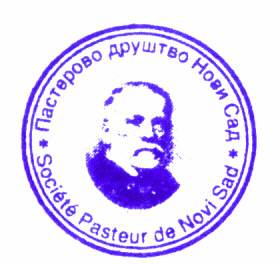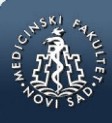md-medicaldata
Main menu:
- Naslovna/Home
- Arhiva/Archive
- Godina 2024, Broj 1
- Godina 2023, Broj 3
- Godina 2023, Broj 1-2
- Godina 2022, Broj 3
- Godina 2022, Broj 1-2
- Godina 2021, Broj 3-4
- Godina 2021, Broj 2
- Godina 2021, Broj 1
- Godina 2020, Broj 4
- Godina 2020, Broj 3
- Godina 2020, Broj 2
- Godina 2020, Broj 1
- Godina 2019, Broj 3
- Godina 2019, Broj 2
- Godina 2019, Broj 1
- Godina 2018, Broj 4
- Godina 2018, Broj 3
- Godina 2018, Broj 2
- Godina 2018, Broj 1
- Godina 2017, Broj 4
- Godina 2017, Broj 3
- Godina 2017, Broj 2
- Godina 2017, Broj 1
- Godina 2016, Broj 4
- Godina 2016, Broj 3
- Godina 2016, Broj 2
- Godina 2016, Broj 1
- Godina 2015, Broj 4
- Godina 2015, Broj 3
- Godina 2015, Broj 2
- Godina 2015, Broj 1
- Godina 2014, Broj 4
- Godina 2014, Broj 3
- Godina 2014, Broj 2
- Godina 2014, Broj 1
- Godina 2013, Broj 4
- Godina 2013, Broj 3
- Godina 2013, Broj 2
- Godina 2013, Broj 1
- Godina 2012, Broj 4
- Godina 2012, Broj 3
- Godina 2012, Broj 2
- Godina 2012, Broj 1
- Godina 2011, Broj 4
- Godina 2011, Broj 3
- Godina 2011, Broj 2
- Godina 2011, Broj 1
- Godina 2010, Broj 4
- Godina 2010, Broj 3
- Godina 2010, Broj 2
- Godina 2010, Broj 1
- Godina 2009, Broj 4
- Godina 2009, Broj 3
- Godina 2009, Broj 2
- Godina 2009, Broj 1
- Supplement
- Galerija/Gallery
- Dešavanja/Events
- Uputstva/Instructions
- Redakcija/Redaction
- Izdavač/Publisher
- Pretplata /Subscriptions
- Saradnja/Cooperation
- Vesti/News
- Kontakt/Contact
 Pasterovo društvo
Pasterovo društvo
- Disclosure of Potential Conflicts of Interest
- WorldMedical Association Declaration of Helsinki Ethical Principles for Medical Research Involving Human Subjects
- Committee on publication Ethics
CIP - Каталогизација у публикацији
Народна библиотека Србије, Београд
61
MD : Medical Data : medicinska revija = medical review / glavni i odgovorni urednik Dušan Lalošević. - Vol. 1, no. 1 (2009)- . - Zemun : Udruženje za kulturu povezivanja Most Art Jugoslavija ; Novi Sad : Pasterovo društvo, 2009- (Beograd : Scripta Internacional). - 30 cm
Dostupno i na: http://www.md-medicaldata.com. - Tri puta godišnje.
ISSN 1821-1585 = MD. Medical Data
COBISS.SR-ID 158558988
ŠMITOV SINDROM - PUT LABORATORIJSKE DIJAGNOSTIKE
/
SCHMIDT'S SYNDROME
Authors
Igor Spasić 1 , Milan Ubavić 1, Biljana Vučković 2
UDK: 616.441-074
The paper was received / Rad primljen: 26.08.2020. Accepted / Rad prihvaćen: 28.08.2020. Sažetak Uvod: Šmitov sindrom ili autoimuni poliendokrini sindrom tipa 2 (APS-2) je autoimuni poremećaj koji se karakteriše kombinacijom adrenalne insuficijencije, autoimunog hipotireoidizma (Hašimototireoiditisa i ređe Grejvs-Bazedovljeva bolest) i/ili dijabetesa melitusa. Primarni hipogonadizam, miastenia gravis i celijačna bolest takođe se sreću u sklopu ovog sindroma. Prikaz slučaja: Pacijentkinja starosti 27 godina javlja se na laboratorijsko ispitivanje u Zavod za laboratorijsku dijagnostiku Medlab. Navodi simptome slabosti, malaksalosti koji se javljaju iznenadno u tok udana, promene raspoloženja, čest osećaj gladi i gubitak svesti u nekoliko navrata. Simptomi su se ispoljili pre 6 meseci, a u poslednje vreme su sve intenzivniji. Pacijentkinja negira postojanje ranije dijagnostikovanih hroničnih oboljenja kao i bilo kakav vid terapije. Navodi da je u nekoliko navrata samostalno izmerila nivo tenzije 105/60 mmHg. Laboratorijski nalaz ukazao je na postojanje Hašimoto tireoiditisa, prisustvo hiponatrijemije kao i hipokortizolemiju. Daljim laboratorijskim ispitivanjem ustanovljeno je prisustvo povišenog titra antiadrenalnih antitela, dok je kompjuterizovanom tomografijom uočeno bilateralno smanjenje volumena nadbubrega. Zaključak: Prisustvo hipokortizolemije uz nespecifične simptome i znakove zahteva detaljnu dijagnostiku i procenu funkcije nadbubrega koja bi uključila ispitivanje funkcionalnosti sve tri funkcionalne zone korteksa, dok adekvatan odabir laboratorijskih testova može dovesti do pravovremene dijagnoze i ukazati na autoimunu etiopatogenezu oboljenja.
Ključne reči: Šmitov sindrom, hipokortizolemija, Adisonova bolest, Hašimoto tireoiditis Abstract Introduction: Schmidt's syndrome or autoimmune polyendocrine syndrome type 2 (APS-2) is an autoimmune disorder characterized by a combination of adrenal insufficiency, autoimmune hypothyroidism (Hashimotothyroiditis and, less commonly, Graves-Bazedow's disease) and / or diabetes mellitus. Primary hypogonadism, myasthenia gravis, and celiac disease are also found in this syndrome. Case report: A 27-year-old female patient reports for a laboratory testing at the Medlab Laboratory Diagnostics Department. She cites symptoms of weakness, malaise that appear suddenly during the day, mood swings, a frequent feeling of hunger and loss of consciousness on several occasions. The symptoms appeared 6 months ago, and lately they have become more and more intense. The patient denies the existence of previously diagnosed chronic diseases as well as taking any type of therapy. She states that on several occasions she independently measured the tension which was 105/60 mmHg. The laboratory findings indicated the existence of Hashimoto's thyroiditis, the presence of hyponatremia as well as hypocortisolemia. Further laboratory examination revealed the presence of an elevated titer of antiadrenal antibodies, while computed tomography showed a bilateral decrease in adrenal volume. Conclusion: The presence of hypocortisolemia with nonspecific symptoms and signs requires detailed diagnostics and assessment of adrenal function, which would include examination of the functionality of all three functional zones of the cortex, while adequate selection of laboratory tests can lead to timely diagnosis and show the autoimmune etiopathogenesis of disease. Key words: Schmidt's syndrom, Addison's disease, hypocortisolism References: 1. Sivarajah S. Polyglandular Autoimmune Syndrome, Type II. Medscape Reference. 2018; https://emedicine.medscape.com/article/124287-overview PDF Spasić I. et al • MD-Medical Data 2020;12(3): 139-141
1Zavod za laboratorijsku dijagnostiku Medlab
2Katedra za patološku fiziologiju i laboratorijsku medicinu; Medicinki fakultet; 21000 Novi Sad
Correspondence to:
Igor Spasić
Department of laboratory diagnostics Medlab,
Branimira Ćosića 21/15; 21000 Novi Sad,
AP Vojvodina, Republika Srbija
Mobile: 060/3003811;
e-mail: igsp92@gmail.com
2. Barker JM. Polyglandular Deficiency Syndromes. Merck Manual for Healthcare Professionals. January 2014; https://www.merckmanuals.com/professional/endocrine-and-metabolic-disorders/polyglandular-deficiency-syndromes/polyglandular-deficiency-syndromes
3. Kemp EH, Ajjan RA, Husebye ES et al. A cytotoxic T lymphocyte antigen-4 (CTLA-4) gene polymorphism is associated with autoimmune Addison’s disease in English patients. Clin Endocrinol 1998; 49:609–13.
4. Vaidya B, Pearce S, Kendall-Taylor P. Recent advances in the molecular genetics of congenital and acquired primary adrenocortical failure. Clin Endocrinol 2000; 53:403–18.
5. Chen QY, Kukreja A, Maclaren NK. The Autoimmune Polyglandular Syndromes. In: De Groot LJ, Jameson JL, editors. Endocrinology. 4. Philadelphia: W.B. Saunders; 2001. pp. 587–99.
6. Neufeld M, Blizzard RM. Polyglandular autoimmune diseases. In: Pinchera A, Doniach D, Fenzi GF, Baschieri L, editors. Symposium on Autoimmune Aspects of Endocrine Disorders. New York: Academic Press; 1980. pp. 357–65.
7. Betterle C, Volpato M, Pedini B, Chen S, Rees-Smith B, Furmaniak J. Adrenal-cortex autoantibodies (ACA) and steroid-producing cells autoantibodies (StCA) in patients with Addison's disease: comparison between immunofluorescence and immunoprecipitation assays. J Clin Endocr Metab. 1999;84:618–22.
8. Doppman JL. Adrenal imaging. In: DeGroot LJ, Jameson JL, editors. Endocrinology. 4. Philadelphia: W.B. Saunders; 2001. pp. 1747–66..
 Medicinski fakultet
Medicinski fakultet